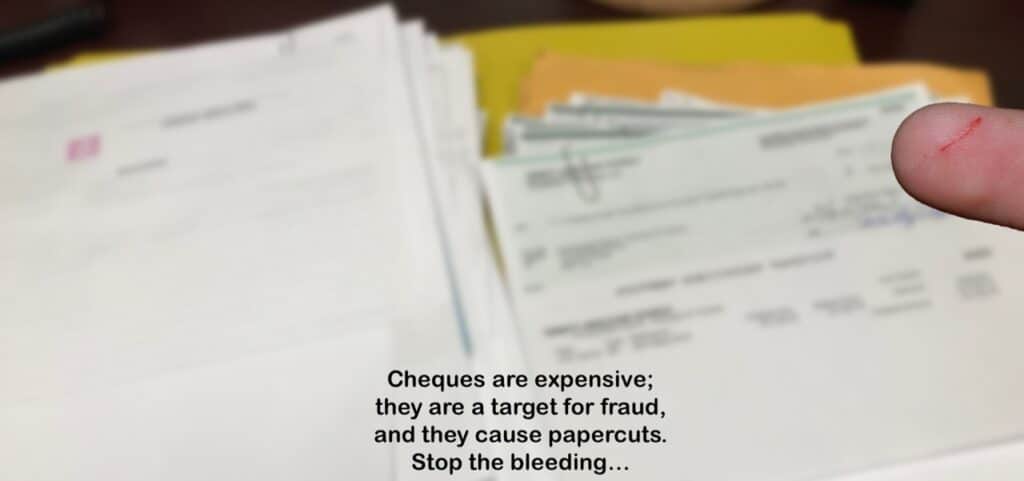
How many of us still refer to an encyclopedia, look up a number in a phone book, or get directions from a paper map? For that matter how many of us still use personal cheques to pay bills? We stopped using these obsolete tools years ago, or are too young to have ever used them. Yet many of us serve on a not-for-profit board, or run a small to medium-sized business, and on a frequent basis are handed a stack of paper cheques for signature.
Personally, I don’t like signing them – I get writer’s cramp. I don’t like having to make a special trip to sign that “urgent” cheque – it’s a waste of my time. I don’t like flipping through the attachments to make sure that one paper clip didn’t accidentally slip over another cheque that I might miss, resulting in another trip for the missed signature.
I bet the staff that print the cheques and paper clip the backup documents to them don’t like doing that either. And I’m pretty sure they don’t like having to chase around people like me trying to get a signature. And after the stack is finally signed, they probably don’t like having to mail the cheques and file the documents that came with them.
And after all that, I doubt the suppliers want to receive an envelope with a paper cheque that they have to deposit, when they could receive an electronic payment.
There have, at least in the past, been reasons to continue to use paper rather than electronic forms of payment:
1) Control: Signing a paper cheque ensured that the responsible party saw and approved the payment, and could send it or hold it if they chose.
2) Review: All that backup documentation behind the paper clip allowed a review of the details related to the requested payment. Most bank or other electronic payment methods didn’t provide this level of review.
3) Remittance Details: The memo field or cheque skirt indicates what exactly is being paid in case there are multiple bills outstanding. Again, most bank or other electronic payment methods didn’t provide this important information to suppliers.
Fortunately, technology has advanced to the point that these barriers have been overcome:
1) Control: Approvals can be digitally recorded on a blockchain. Immutable and irrefutable, they are far more secure than a signature (as banks don’t usually check signatures anyway). Approvals can be done from anywhere, anytime, and the timing of the payment is controlled by the approver.
2) Review: With the option for integration to the accounting system and/or the ability to attach images or emails, digital approval can allow for detailed review without a stack of paperwork.
3) Remittance Details: Some electronic payment solutions also offer electronic remittance details that provides more timely and complete information than paper ever could.
And there are other reasons to switch to an electronic payables solution:
4) Cost: Issuing a paper cheque typically costs over $6, while an efficient electronic system will save over 50% of this cost.
5) Convenience: The ability to securely review and approve payments from anywhere, including using a mobile device,eliminates the need for signers to be physically present.
6) Environment: Less paper printed, copied and mailed makes the process more environmentally friendly.
Considering all this, doesn’t it make sense to stop signing cheques and insist on a more secure, convenient, cost-effective and environmentally-friendly solution?
